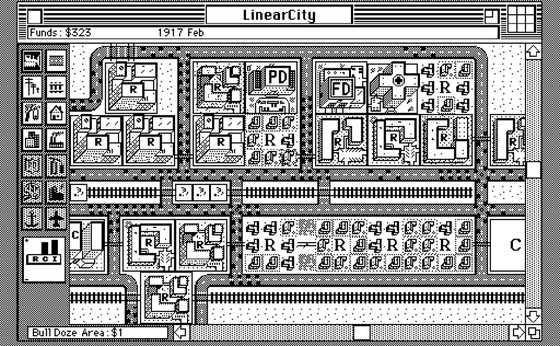What is the evaluation of city simulation 'sim city' from people involved in real urban design?

by m01229
" Sim City ", which was released for Mac OS and Amiga OS in 1989, can set up residential areas, industrial areas, railroads, etc. in the land without any buildings to create a city as he likes It is a popular simulation game. Among the players who have played this "Sim City" series, there are people appearing in the work involved in urban design even in reality, and how the core people evaluate the "sim city" series The Los Angeles Times is summarizing about.
From video game to day job: How 'SimCity' inspired a generation of city planners - Los Angeles Times
https://www.latimes.com/business/technology/la-fi-tn-simcity-inspired-urban-planners-20190305-story.html
"Sim City" is a work that many eyes of the game player are directed to the part of "urban planning" which was not generally noticed until then, such as city district settings, road design, infrastructure development, financing, etc. It is not a simulation game that faithfully reproduced the real city construction, but in fact it is simplified to make playing easier for "Sim City", which actually needs to consider more detailed elements. It also includes unrealistic elements like games, such as monsters like Godzilla, UFOs, and the ability to destroy their own city by themselves.

by haljackey
Jason Baker, Vice President of the Transportation and Housing Department of the non-profit organization Silicon Valley Leadership Group , met "Sim City" when studying political science at the University of California, Davis . Mr. Baker said that he was keenly interested in the development of local governments because he was passionate about "Sim City".
Instead of writing a paper on university's "How three different urban models evolve" eventually Baker built three scenarios with "Sim City" and gave a paper on what kind of problems his virtual city faced It seems he thought about putting it together. "I am enjoying running my own city well, not a type of player who breaks down the city with a monster, and I enjoyed being able to manage my own city well." By playing "Sim City", I knew the importance of local governments That's it, "Baker says.

Nicole Payne, a staff member of the New York City Transit Authority, had been drawing a fictitious city map from a young age, and it was encounter with the game that he was advised by "Sim City" from those who saw the imaginary map That's right. Payne commented, "If I have not met" Sim City ", I will not be in this place right now."
Like Baker and Payne, many of the "Sim City" fans who are actively involved in urban management think that "one change will eventually affect the entire city", "Transport access · Ease of living · Economy is a city We can observe how it relates to the development of "SimCity" is pointed out that it is a wonderful place of "Sim City."

However, since the SimCity series has been simplified as a game, complex complex housings that have commercial facilities on the first floor, such as a parking lot, a bicycle exclusive lane, which can be seen in a big city, do not appear. Stone Librande, a designer of the 2013 version of "Sim City" , told The Atlantic 's interview "When I observed the city with Google Map, it turned out that there really was a lot of parking lots in the city, When modeling the parking lot in order to model the game, I am excluding it because the game became sober and boring. "
Jarret Walker, a consultant of public transportation, said that "Sim City" is an interesting game as an introduction to urban design, but "transportation network costs more than construction than construction" "Housing development and commercial Development must always be done in separate compartments ", which is a problem in that two old urban design philosophies exist in the game.
Walker said, "Of course SimCity is a game so you will need to simplify it to make it fun.The problem is that the two misunderstandings in" Sim City "had the urban design which was in the late 20th century Sim Simity "has not only simplified urban design but also simplified to the direction of the old urban design philosophy denied by New Urbanism in the latter half of the 1980s, whereby the 1960s The urban design philosophy of the city was to be planted in the gamer generation of the 1990s ".

Jose Sanchez, associate professor at the University of Southern California Department of Architecture, noticed the problem that "cities in the game only show expansion as 2 dimensions to the last", and in the game " Block'hood " developed by himself, "nature works well While incorporating, we will expand the city in the vertical direction "that seems to have centered around the game nature that. Also, Mr. Sanchez's sequel " Common'hood " is supposed to take into consideration "neighbor problem" that can not be avoided on modern urban design such as homelessness and drug addiction It was.
Commonhood Announcement Teaser - YouTube
Related Posts:







